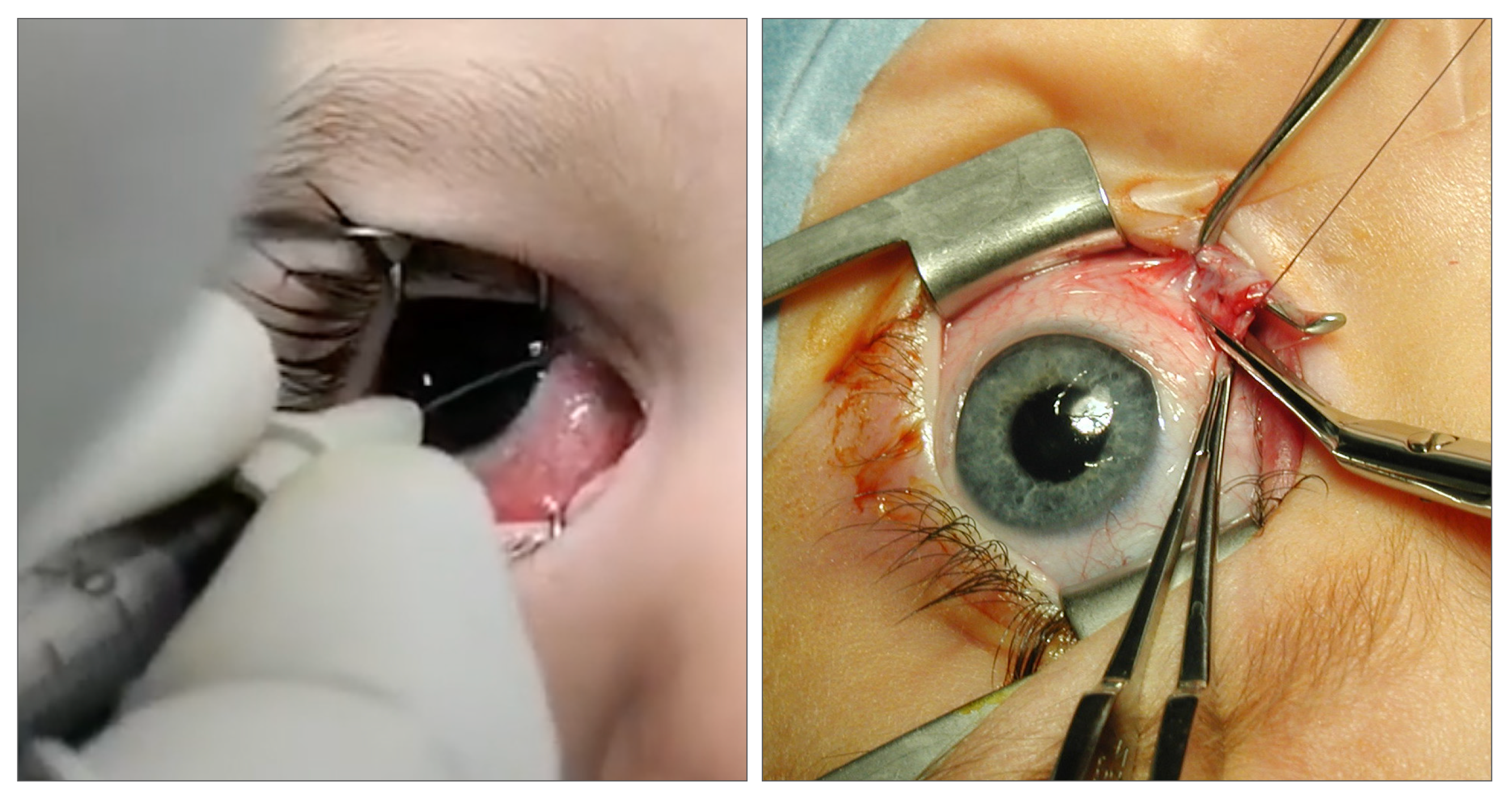 |
| Longer delays from esotropia onset to treatment and the presence of amblyopia were independent risk factors for worse sensorimotor outcomes in patients with acute, comitant esotropia. Photo: Paolo Loureiro, MD; B. Navez/Wikicommons. Click image to enlarge. |
Acute acquired comitant esotropia often presents with moderate- to large-angle esotropia, which interferes with the development of binocularity and is a risk factor for amblyopia. Incisional strabismus surgery has been considered the standard of care for management; however, botulinum toxin injections into the extraocular muscles have been shown to be noninferior to bilateral medial rectus muscle recessions. A team of researchers compared the efficacy of botulinum toxin injections to strabismus surgery in children with acute, acquired, comitant esotropia and to investigate factors predicting success. They found that there was no significant difference in success rate between the injection group and the incisional surgery group at six and 12 months.
Surgeons from 19 centers contributed to the analysis, which was published in American Journal of Ophthalmology. There were 74 patients in the botulinism toxin injection, or chemodenervation, group and 97 patients in the surgery group. Success rate was defined as total horizontal deviation of 10 prism diopters or less with evidence of binocular single vision.
In the propensity-matched data (n=98), success rate was not significantly different at six months (70.2% vs 79.6%;) and 12 months (62.9% vs. 77.8%) but was significantly lower in the chemodenervation group at 24 months (52% vs 86.4%). Only 48% of patients had follow-up at 24 months in the propensity matched data, which may underestimate the true effects of treatment long-term. Interestingly and contrary to most findings and practice patterns, we found no influence of the angle of esotropia on the success rate of chemodenervation or surgery.
“Regardless of the type of intervention, we found that longer duration from esotropia onset to treatment was an independent risk factor for poorer sensorimotor outcomes at all postoperative time points studied,” the researchers wrote in their paper.
The study also noted the surgeons participating in the study preferred performing strabismus surgery over chemodenervation in patients with preoperative amblyopia. “We found that the presence of amblyopia was associated with lower success rates at all time points regardless of the type of intervention,” they added.
Irrespective of treatment modality, treatment delay was associated with lower success rates at six months, with median time from onset to intervention 4.5 months in the success group and 7.7 months in the failure group. “Prompt intervention after esotropia onset (or re-treatment of patients with undercorrection) should optimize sensorimotor outcomes,” the researchers wrote.
“While the benefits of chemodenervation were not as lasting in the present study as with incisional surgery, and non-inferiority analysis does not support chemodenervation being non-inferior to incisional surgery, there are still reasons to continue to offer chemodenervation as an option, including its less invasive nature, lower barrier to early intervention, lower cost, potential for equal or better outcomes with repeat injections and easier access to care,” the researchers emphasized.
Cheung CSY, Wan MJ, Zurakowski D, et al. A comparison of chemodnervation to incisional surgery for acute, acquired, comitant esotropia: an international study. Am J Ophthalmol. March 3, 2024. [Epub ahead of print]. |

